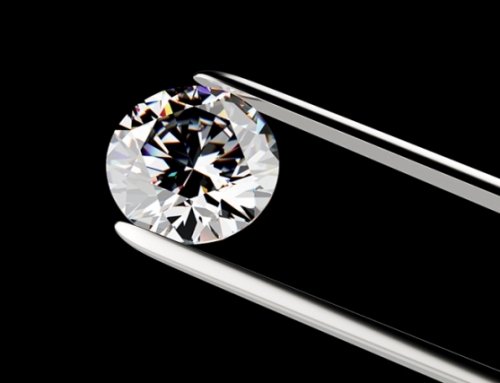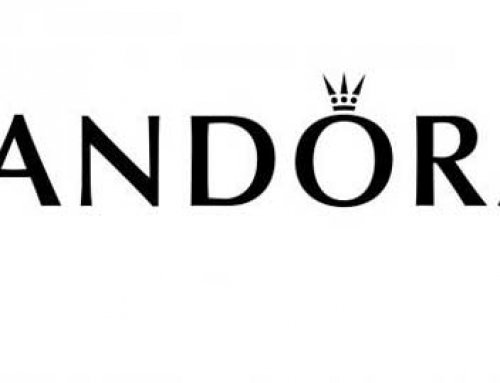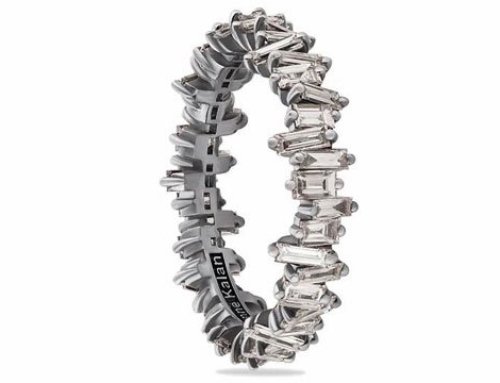At the time when the diamond industry ‘A Diamond is Forever’ was at its peak, consumers were very sensitive to slogans and advertisements. Today, social networks have led to a more interactive dialogue between companies and their customers, and that responsiveness to advertising has been greatly weakened.
“In an era characterized by unrivaled creativity and development, the diamond industry is lagging behind. Although sales have increased in the United States in recent years, the industry must continue to innovate in order to maintain and increase its share of consumer spending,” said Gina Drosos, CEO of Signet Jewelers.
This applies to Signet, the largest jewelry company in the United States, but also to the rest of the diamond industry, Gina Drosos admitted in an interview she gave during the recent JCK Las Vegas show. Every company must do its part.
Gina Drosos took the leadership of Signet in January 2017, after having worked for Procter & Gamble, where she helped with the redesign of the Olay skincare line and the Old Spice men’s products. These projects showed how the reinvention of a brand can lead the entire market in a new direction, she explained. Innovation, she says, not only drives specific brands and product lines, but also the growth of the entire industry.
Although Signet has not been at the top of the market for several years, as the CEO expressly acknowledges, the company hopes to play this role in the future.
“Innovation
[…] not only drives specific brands and product lines, but also the growth of the entire sector.”Gina Drosos presents three points that require an innovative approach:
- the fact that the diamond and jewelry market depends on the holiday season and on unique moments,
- the evolution of demography and expenditures,
- the purchase experience for jewelry that seems to be independent of reality.
Where is the diamond industry during the other 46 weeks?
The diamond industry needs to further develop its customer base by addressing other moments, said Gina Drosos, to tackle the first of the three problems. The market is dependent on marriages for most of the year; a unique event in the lives of most consumers, resulting in a non-recurring transaction for retailers. Almost a quarter of sales relate to engagement rings and wedding rings.
In addition, she urged the sector to no longer invest all its energy in the holiday period. “If we only focus on six weeks in the year, it means we neglect the other 46,” she said.
Instead, companies must work together to make jewelery the first item to be offered as a gift. At this moment, people prefer to take trips, go to restaurants and receive clothing even before jewelery, she said.
For this, jewelers also have to prove to customers that they can trust that they receive expert advice. Advice that is tailored to their needs and personal experiences. Part of that trust is based on understanding the changing customer base of the sector, she said.
The diamond industry must appeal to more diverse life experiences
Referring to the demographic evolution in the United States, Gina Drosos explained that the industry is not sufficiently interested in the Hispanic community. “They buy more jewels than the average customer and buy jewelry without the need for a special occasion,” she said. “This is clearly a huge opportunity for our industry.”
Moreover, the traditional family model changes. In fact, 40% of couples who get engaged already have children and there are more same sex couples.
“It is extremely important that we understand and understand that our customers frequently enter our stores with changed life experiences,” she said.
At the same time Generation Y members are more inclined than baby boomers or Gen Xers to buy a ring when they get married, she said. That is why she explained that the diamond industry should not neglect them and offer a powerful experience to attract Generation Y consumers.
Focus on technology
Although 90% of customers continue to visit a traditional store when they want to buy a jewel, people spend more and more time on prior online research. Social networks are also becoming increasingly important.
“Customers want to discover you, and communicate with you, through their social media platform,” says Gina Drosos. “I see a future in which we can predict who will become engaged, based on their activity on social networks.”
The use of technology should also improve the experience in the store, she added. For example, Signet has a ‘digital safe’ of its stock of diamonds so that customers can access up to 100,000 high-quality photos of the company, in addition to the goods that are in store. At the same time, Signet, thanks to its subsidiary R2Net, wants to integrate virtual and augmented reality into the jewelry buying experience, said Gina Drosos.
Based on these few examples, she said that, in order to survive, companies must now adapt to these trends and grow in the context of the dynamic shopping environment that we know.
“If the next chapter of the diamond industry and jewelry is determined by disruption, it will be the ability to establish strong relationships, meaningful and powerful relationships with our customers that will determine who succeeds and who fails,” she added. “It is no longer enough to follow the normal course of events. We must immediately launch a disruptive innovation.”
“Change can be frightening, and the temptation is often to resist it. But change almost always provides opportunities – to learn new things, to rethink tired processes, and to improve the way we work.”
Sylvain Goldberg








